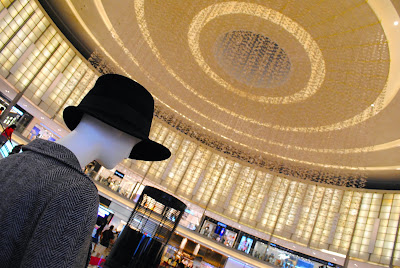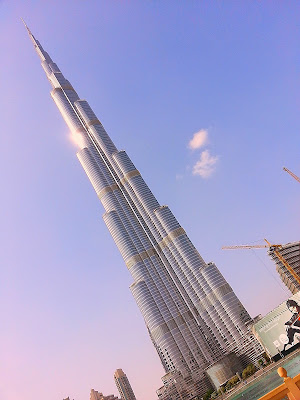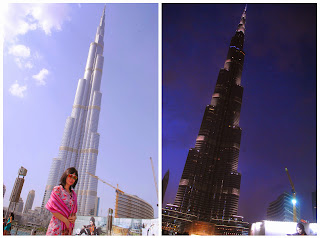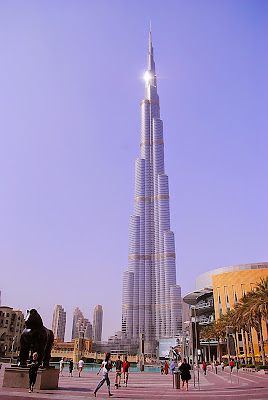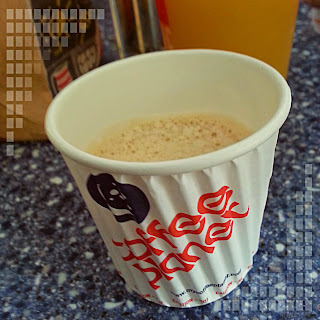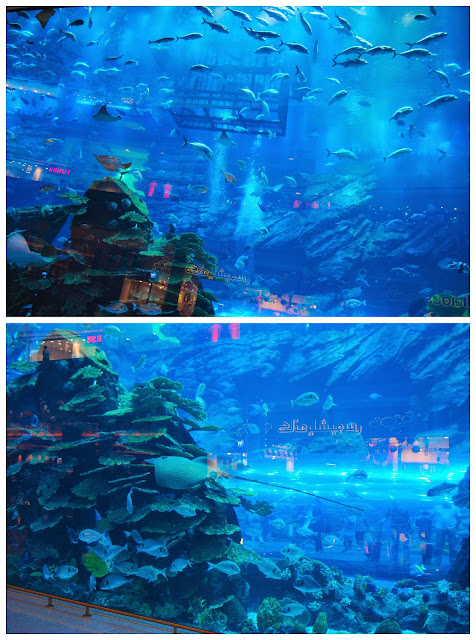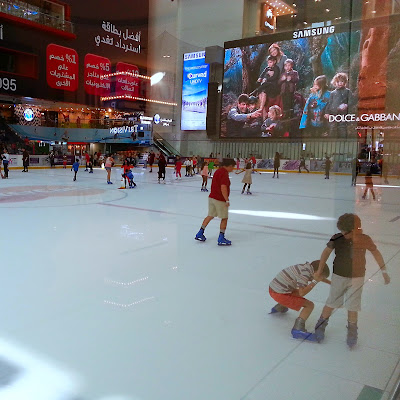Every graduate (and even dropout) feels something special about his/her alma mater. It is where one spent his/her youth, formed lifelong friends, and undertook intellectual challenges to prepare oneself for serving the society. Herein, I write about
Chinese Heritage Centre at
Nanyang Technological University (
NTU), where I pursued my undergraduate study.
Schools and universities, especially those with history, are among places to visit wherever I travel. On the open house day of the Chinese Heritage Centre, I was very grateful that I could bring baby Ren to visit his mother's almamater.
NTU is the first university that baby Ren visited, and I deeply hope that he would visit and learn from a number of great institutes worldwide as time goes.
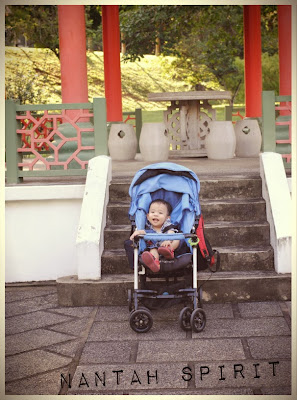
If there are public transports to reach a destination and I am not short of time, I prefer to take public transports. Yes, I am concerned about sustainability and frugality. Experiencing public transports allow me to sense the feelings and the attitudes of people who commute to a particular destination.
I have been grateful that an NTU student volunteered to help carrying Ren's folded stroller while we boarded the bus. I was alone, carrying Ren in front of me with a baby carrier, a backpack of his milk, hot water, diapers, toys at my back; my hands were to carry the stroller and tap the EZ-link card.
I really admire single parents, and people in the past had succeeded to raise many children. My thought went that, if these people can do it, so can we!

We just need to be more strategic, such as anticipating possible scenarios and preparing for them. When I travel without Ren, tapping the EZ-link card is as smooth as waving a good bye. However, that day I had to plan carefully, so that the bus would not wait too long for me boarding and getting down from the bus.

Ren's uncle waited for us at the 179 bus stop. When I was an undergraduate of NTU, I brought Ren's uncle - then a primary school boy to NTU and he posed for a photograph at the Lee Wee Nam library, one of my favorite places in NTU. Now, he ends up as an engineering student of NTU after studying hard in his high school. Perhaps, bringing young children to campus early can help them to define their dreams.

On our arrival at the Chinese Heritage Centre, opposite the lush
Yunnan Garden, two kind volunteers rushed down the main staircases to help us. Thank you very much! I did not know that there was a wheelchair access behind the building.
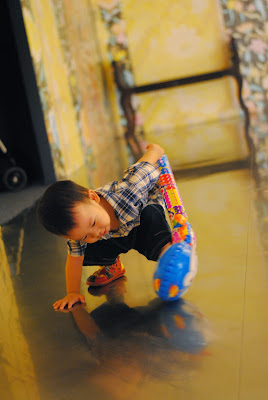
Baby Ren was given a Doraemon (ドラえもん) balloon. Like many parents who aspire their children to be creative, I hope that Ren would have a lot of
creative ideas that flow incessantly out of his mind, just like how Doraemon can always produce futuristic gadgets, medicines and tools from his 4D pocket.
We were fortunate to have a guided tour on two exhibitions:
The Nantah Pictorial Exhibition and
Chinese more or less (an exhibition of overseas Chinese identity).
I knew about
Nantah (Nanyang University) since I was in high school. My chemistry teacher, Madam Yong Mu Lin, graduated from Nantah. She taught us not only chemistry, but also the virtues of
hard work and
commitment.
I remember clearly how Madam Yong willingly stayed two-day-per-week after school hours, to help weak students with more detailed explanation and to help me preparing myself to compete* in a national chemistry competition. I always think that emerging as one of the winners of that competition, helped me to win a
Nanyang Scholarship** that has positively changed the trajectory of my life.
*In the initial stage, there were other students invited to join the training. But I ended up as the last who continued practising using China GaoKao 高考 materials.
Grit matters. The psychologist Angela Lee Duckworth highlights that
grit plays more significant roles than IQ, social intelligence, good looks or physical health for success.
**I am forever grateful to Nanyang Technological University, especially because my parents told me that I had to figure out the finance myself should I be interested in pursuing a tertiary education.
Perhaps, it was partly because of the tremendous
dedication of Madam Yong, that I wanted to study at Nanyang Technological University, even though National University of Singapore has been more established and of higher ranking.
Perhaps, it is the
Nantah Spirit and the story behind the founding and the demise of Nanyang University that allured me and many others to the Yunnan Garden.
I wonder if it is human nature to take for granted what we have and only long for things (and people) once they are gone forever. What we can do is to remind us everyday (yes, every morning and every night) the importance of being
grateful, as the thankful hearts are always closer to the riches of the universe, so that we can
do more meaningful things in our limited hours, days and years.
♥ ♥ ♥
At
The Nantah Pictorial Exhibition, we learned more about the history of universities @ Yunnan Garden, Singapore.
In 1953, the Chinese communities in Singapore, Malaya and other parts of Southeast Asia responded enthusiastically on the proposal to form a Chinese language university by Tan Lark Sye 陈六使 (1897-1972), a rubber entrepreneur and philanthropist who firmly believed in the
value of education.
People from all walks of life in Singapore as well as other regions of South East Asia, from rich tycoons to poor hawkers and trishaw pullers, had made generous donations and rendered tremendous assistance.
I especially appreciate the contributions from the poor. For example, $1 may not mean a lot to the rich, but one who earns less than $2 has to sacrifice largely to donate $1 away for a cause that he/she believes in. I know each $ equals sweats, tears and bloods, for I also worked as a part-time student being paid $6/hour in the 21st century NTU.
In 1954, William Goode (Colonial Secretary) visited the construction site of Nanyang University, acompanied by Tan Lark Sye and Lien Ying Chow.
In 1955, the
arch of Nanyang University / Nantah -- the first and only Chinese-medium institute of higher learning outside China, was built.
In 1956, Nanyang University started classes for courses in arts, sciences, and commerce. The certificates of the degrees of Nanyang University were written in three languages, from left to the right: traditional Chinese, Malay, and English.
In 1964, Nobel Laureate Professor Yang Chen Ning 杨振宁 visited Nantah. Professor Yang works on statistical mechanics and particle physics. In 1957, he and Tsung-dao Lee received the Nobel prize in physics for "f
or their penetrating investigation of the so-called parity laws which has led to important discoveries regarding the elementary particles."
In quantum physics, a
parity transformation is the (simultaneous) flip in the sign(s) of spatial coordinate(s). The conservation of parity states that the parity of the total wave function describing a system of elementary particles is conserved. Parity is conserved in electromagnetism, gravity, strong nuclear forces, and strong interactions, but
violated in weak interactions.
Do you think that Chien-Shiung Wu 吴健雄, who performed the decisive experiment verifying parity violation, should also be awarded the 1957 Nobel Price in physics, in a similar way that Rosalind Franklin (whose work on the X-ray diffraction images of DNA, led to the discovery of the DNA double helix) should be awarded the 1962 Nobel Price for Physiology / Medicine? Sadly, Franklin passed away in 1958 at age 37.
Sorry, I digress. Let's return to the history of Nantah.
In 1972, Queen Elizabeth II visited Nantah. Photographs of the Queen - wearing an aristocratic hat and sleeveless knee-length dress, at the same staircases where we just climbed with the assistance of the volunteers, made me imagine the campus atmosphere and the feelings of the students at that time.
At the era of Nanyang University (1956-1980), being a Nantah student was a very prestigious accolade. Not all young people had the opportunities to present the required intellectual requisites to be admitted, i.e. to pass the admission test.
I am curious if financial difficulties would hinder one's aspiration to pursue study in Nantah.
A piece of
story from a former staff serving the Nantah registrar, appears to highlight that f
inancial challenges should not entirely thwart a dream to pursue a higher education in Nantah.
While a staff, he fell in love with a female Nantah student, who was as precious as panda. The
power of love can be so great that he ended up realizing his university dream. He secretively prepared himself for the admission test to surprise her, was successfully admitted with flying colors, and worked hard to support himself financially. The only regret that he has is that he did not join as much student activities as he wished.
I recalled how my friends in the 21st century NTU enthusiastically dragged me to attend events, from VIPs talks to concerts. Honestly, I was a struggling student. I realized that to succeed academically, I need to spend more time studying than other students. I also had to do tasks for extracurricular activites (ECA), so that I had sufficient ECA points to stay on campus as off-campus accommodation has always been more expensive. I also worked part-time as a student assistance. When a friend managed to get a Fish Leong / Liang Jingru 梁靜茹 concert ticket for me, I was deeply touched. When a senior walked half the campus to my hall, to brought me a supper of nasi lemak on my birthday, I was tremendously grateful. There are many great memories on the Yunnan Garden Campus.
The
friendships formed during our school years are among the most beautiful ones. The relationships of the young people, full of
idealism,
aspirations,
excitements,
hope and
commitment, in the face of life challenges, will never fail as the themes of any drama, simply because every one is the actor / actress of his / her life, as the saying goes 人生如戏,戏如人生.
I personally know many friends who found the following treasures on campus: their lifelong and close friends (知心朋友), soul mate, wive, husband. All these people have become the support they have for the rest of their life.
In 1980, Nanyang University was merged with the University of Singapore, to form National University of Singapore. If you google to find out why, you will learn different perspectives explaining the destiny of Nantah, and it is up to you to make your own conclusion. The old
Nantah administration building of a beautiful Chinese-style architecture, now houses the
Chinese Heritage Centre.
For a quarter of century
Nanyang University, affectionately called
Nantah, was a hope for the supporters of Chinese medium education and culture in Southeast Asia. Students hailed from not only Singapore, but also Malaya, Thailand, Indonesia, and the alumni are now all over the world.
In comparison with other universities, especially another alma mater of mine that celebrated 800-year anniversary recently, Nantah was indeed short-lived. Howev
er, the story behind the founding of Nantah and her development, growth and demise, will evoke
strong emotions among many people today.
In 1981,
Nanyang Technological Institute (
NTI) took over the ground of former Nantah. NTI was an English medium engineering college.
In 1991, NTI was promoted to
Nanyang Technological University (
NTU), and merged with with the
National Institute of Education (
NIE).
In the 21st century, on a summer day I arrived at NTU, where the former Nantah was. The writing 自强不息 (continuous self-improvement) stroke me forever. Some places are especially magical because of people who had been there. Places where people have prayed for years and centuries, such as churches, temples and mosques are very sacred. Similarly, places where people have studied with their heart and hoped for the best, have that kind of spiritual forces that will never fail to encourage the future generations.
Every time I listen to the song
Chuan Deng 传灯, I will remember Nantah. Perhaps, it is also the
Nantah Spirit that has sustained me and my pursue of knowledge across oceans and continents, and now in the desert.

Nantah Spirit that I pasted on my study desk in my NTU hall room to remind myself to work hard.
♥ ♥ ♥
In 2001, NTU established School of Biological Sciences.
In 2004, NTU established School of Humanities and Social Sciences.
In 2005, NTU established School of Physical and Mathematical Sciences.
In 2009, NTU established School of Art, Design and Media.
In 2013, NTU and Imperial College London jointly established a new medical school, the Lee Kong Chian School of Medicine.
In 2014, QS World University Rankings rank NTU first for Top 50 Under 50, 39th globally, and 6th in Asia, placing it in the top 1% of universities globally.
I am grateful that NTU is rocketing in the global competition. Based on the experience of many people whom I have encountered and mine, a good degree helps one to secure a good job and a good business contracts.
However, we need to remember that eventually it is the
substances of the people that make a university
strong and
sustainable. Modern facilities or historical architectures alone are insufficient to create and sustain a good university, only when her graduates
make significant contributions to the society and the world, the university is successful.
♥ ♥ ♥
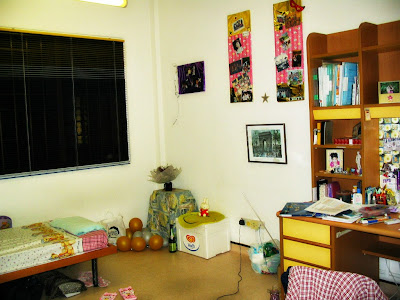
My (transient) room in the oldest hall of residence in NTU: Hall 1 (established 1957). Looking back at this photograph, I realized that I am still using the same bed sheet of bears and pink stars. Wow!
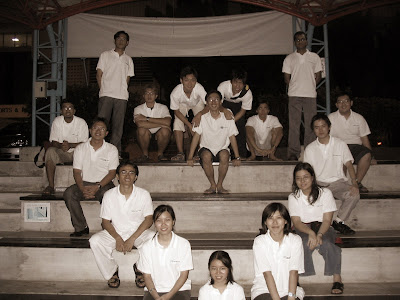
There is something magical about the heart shape! A student committee posed in a heart shape on my request. Yes, I have been inspired by
love and
servicefromheart, since many years ago. I admire people who self-sacrifice themselves for others, like Mother Teresa, Gandhi, Mandela, and the list goes on...
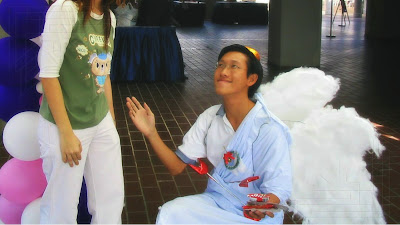
An angel or a cupid on campus (thank you our dear volunteer!) brightened the days of many women.
More:
With love,
ServicefromHeart
2014
Last updated 20141115










